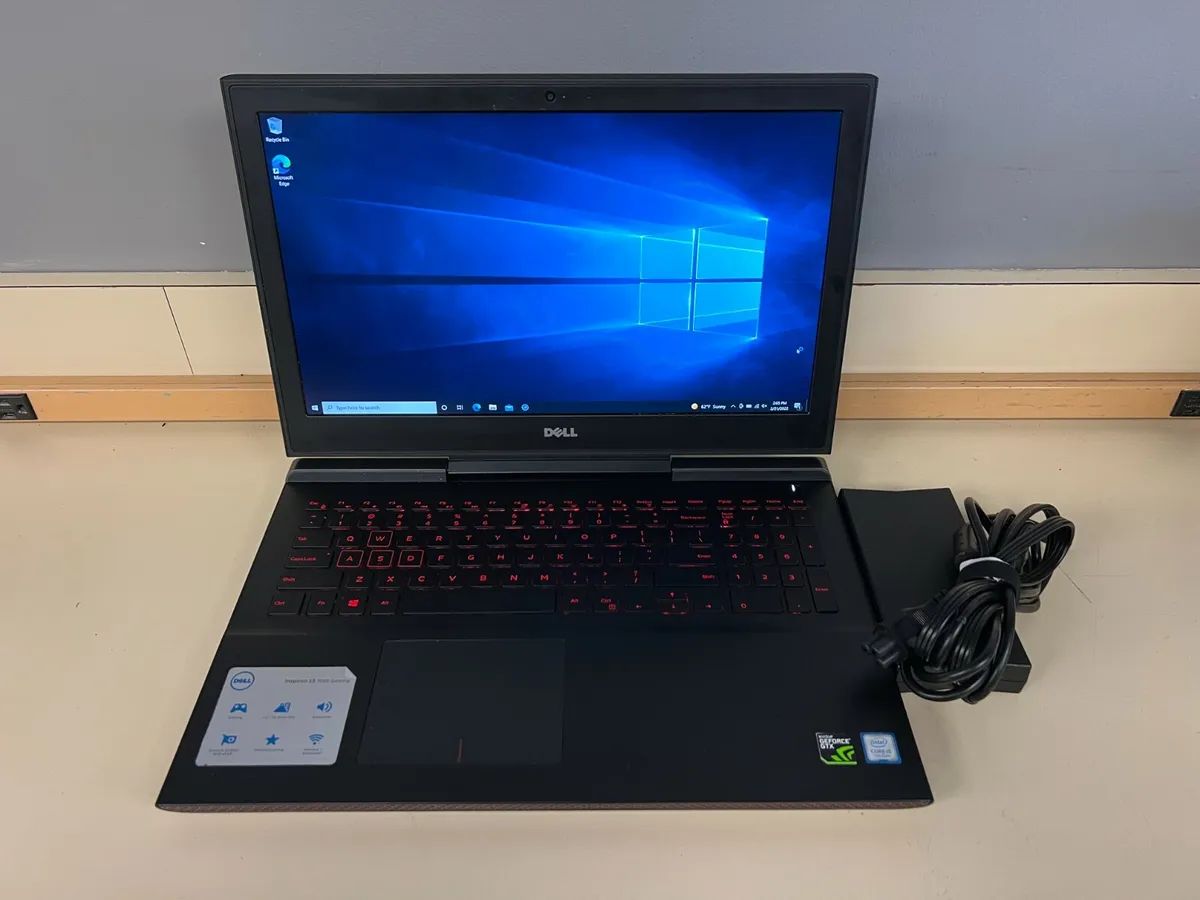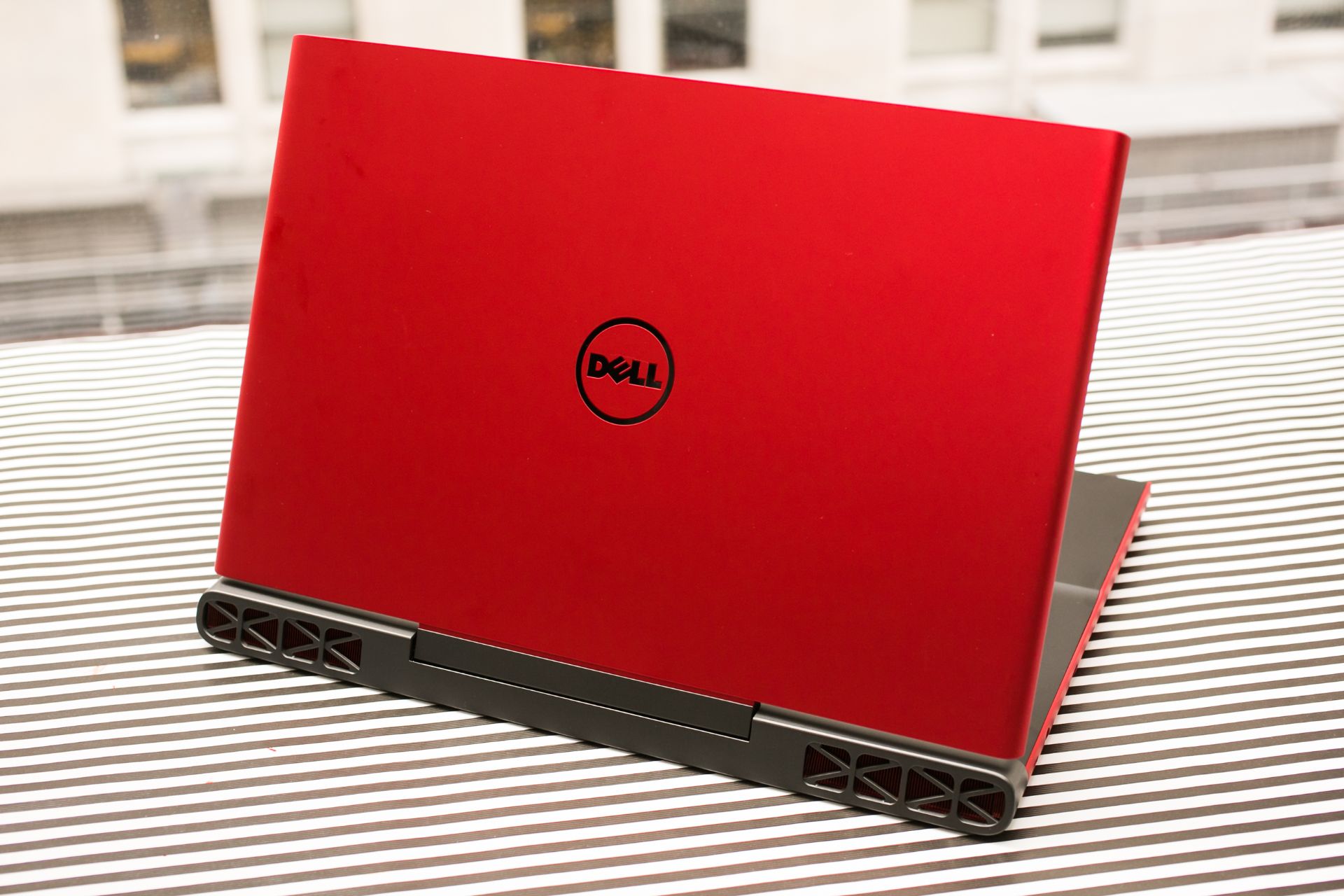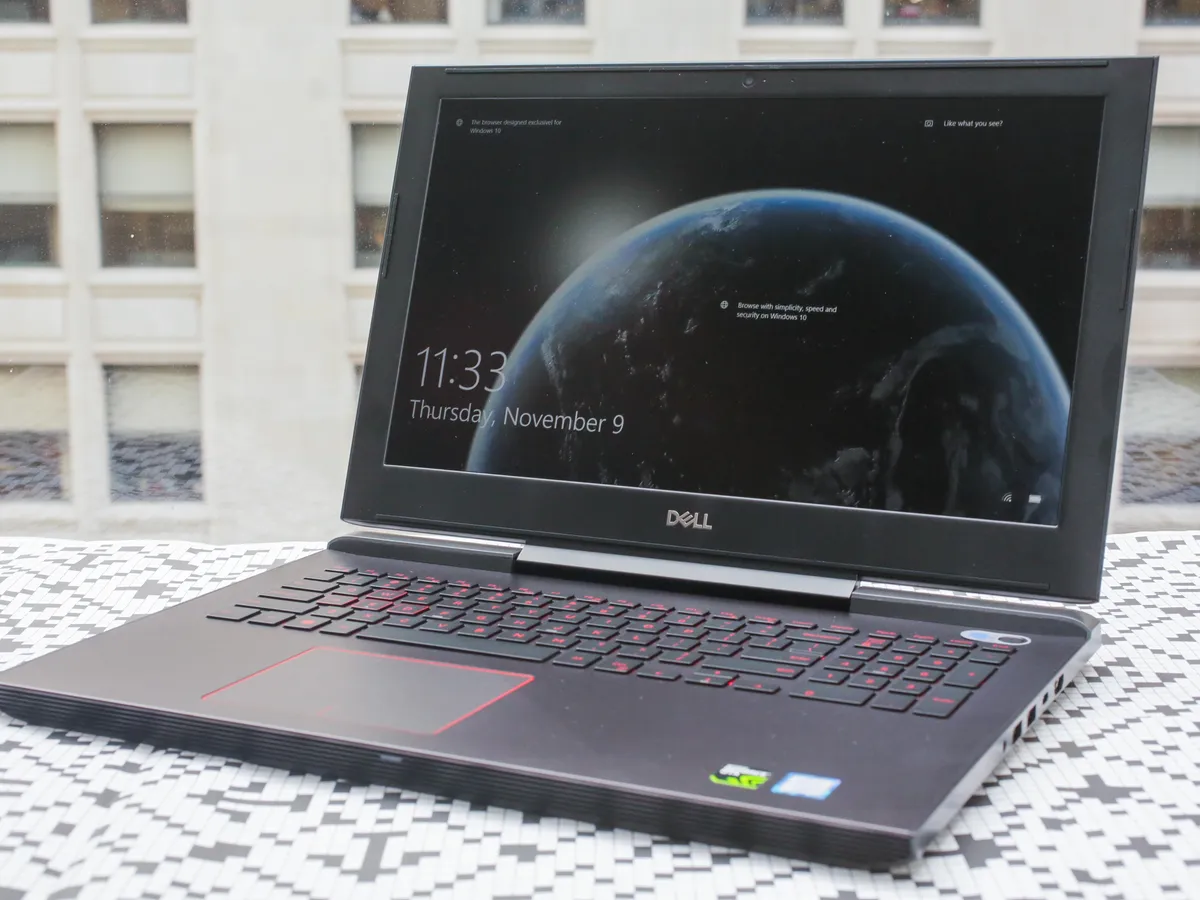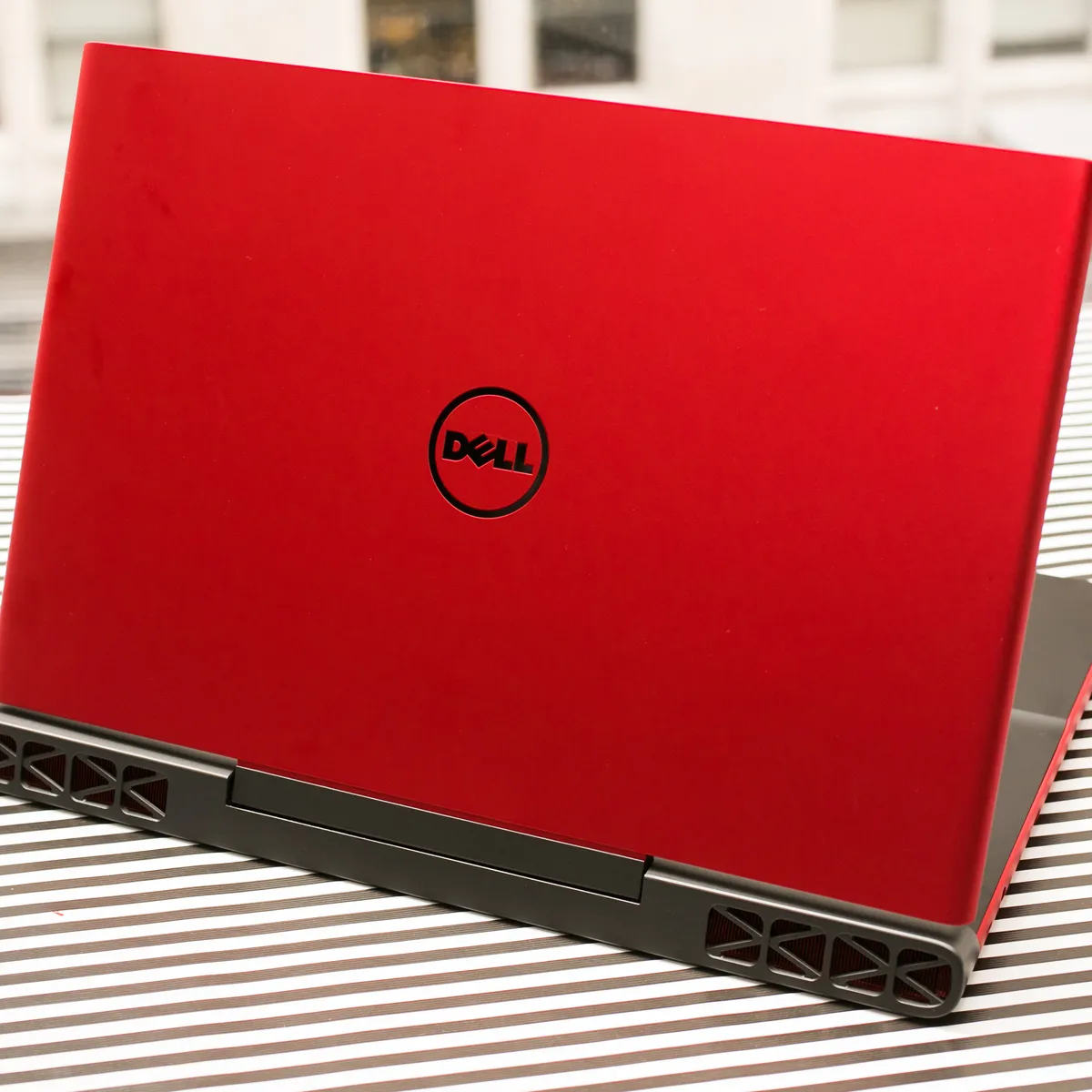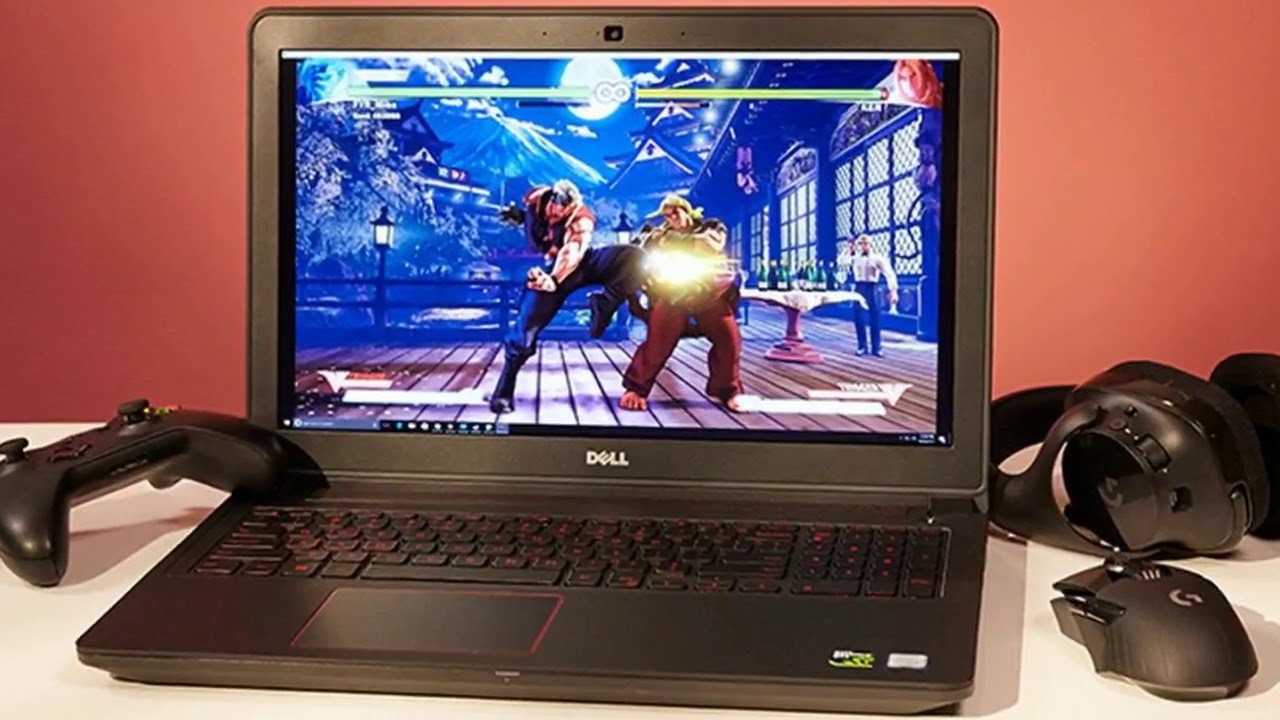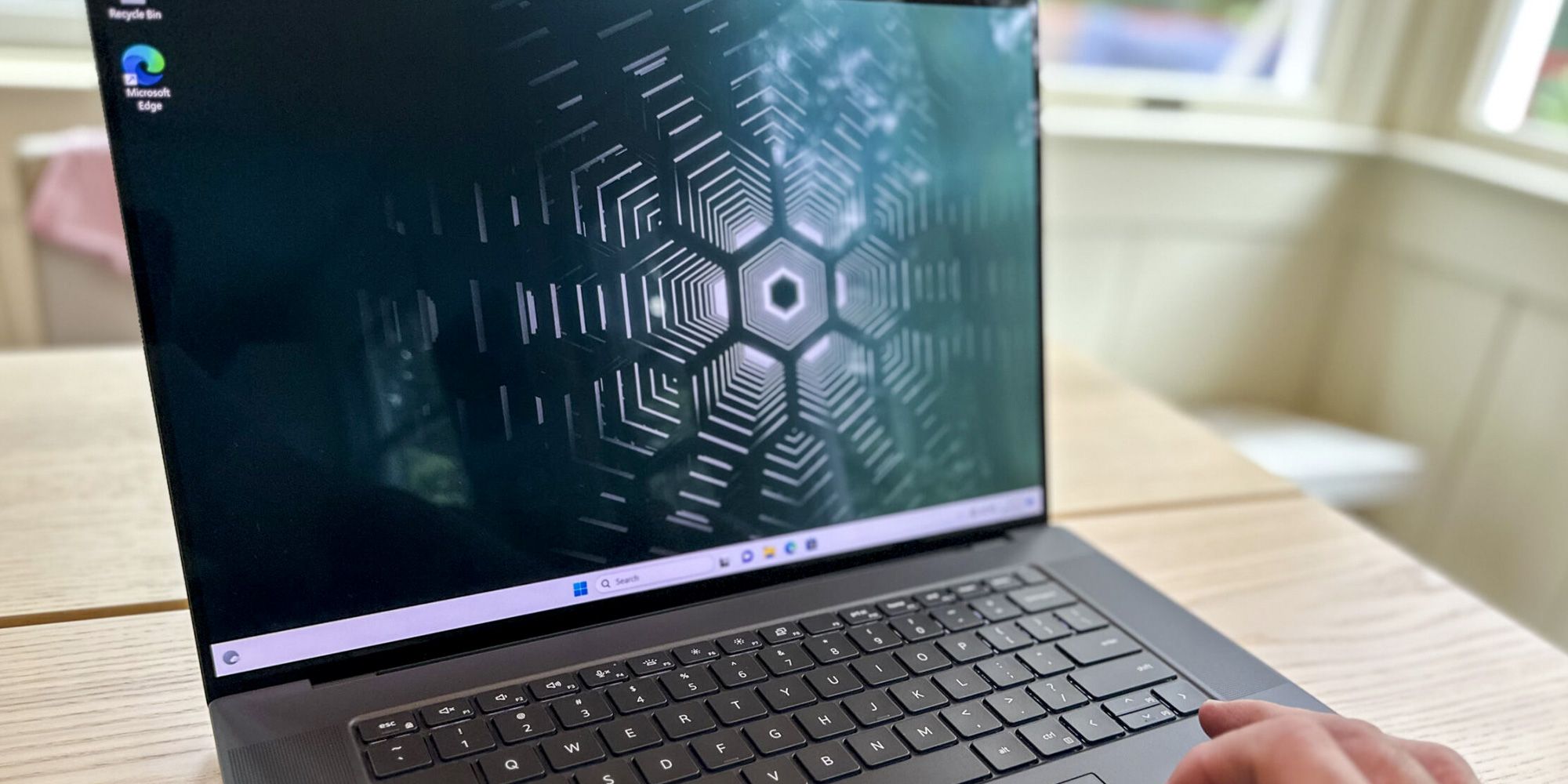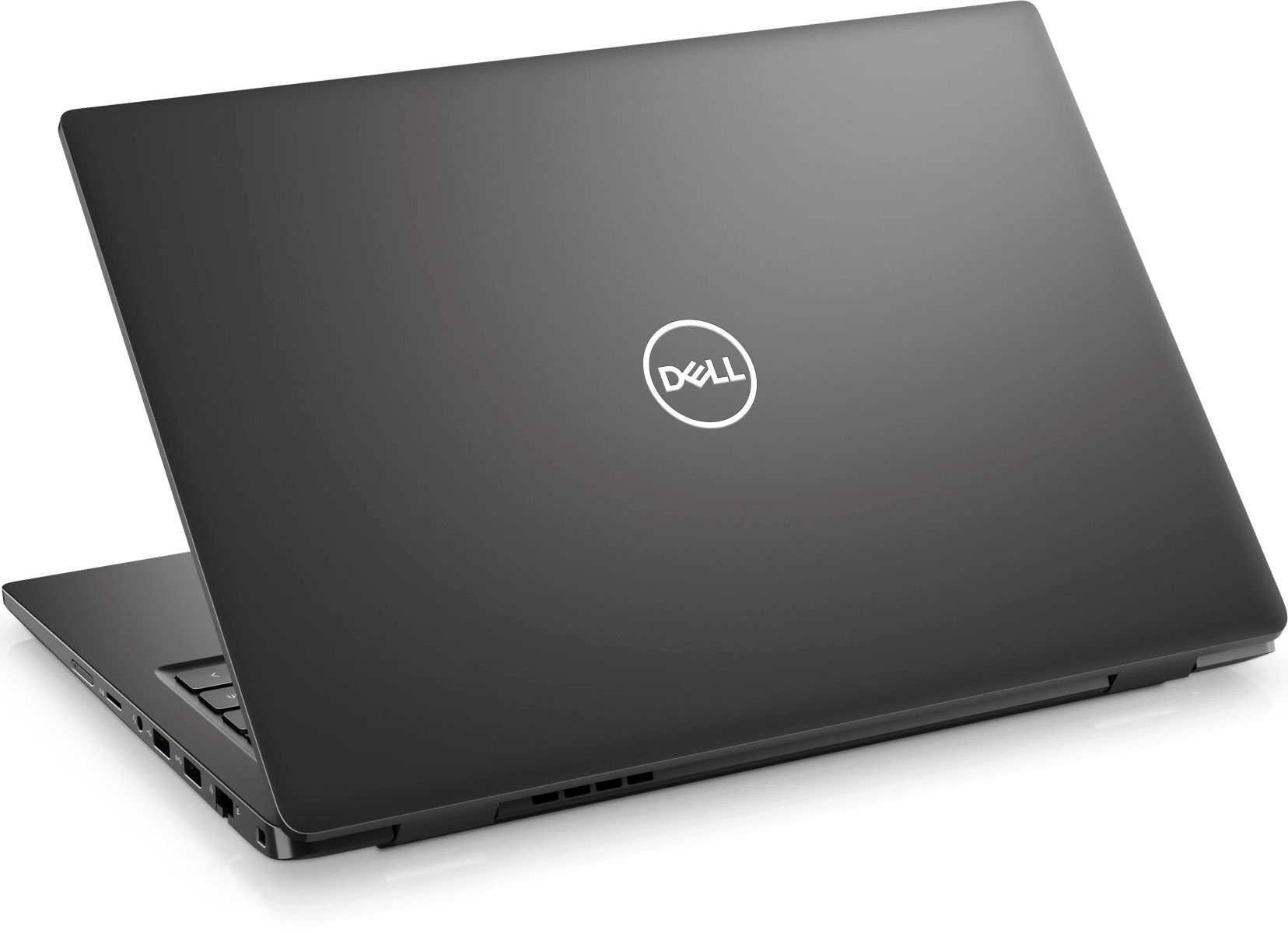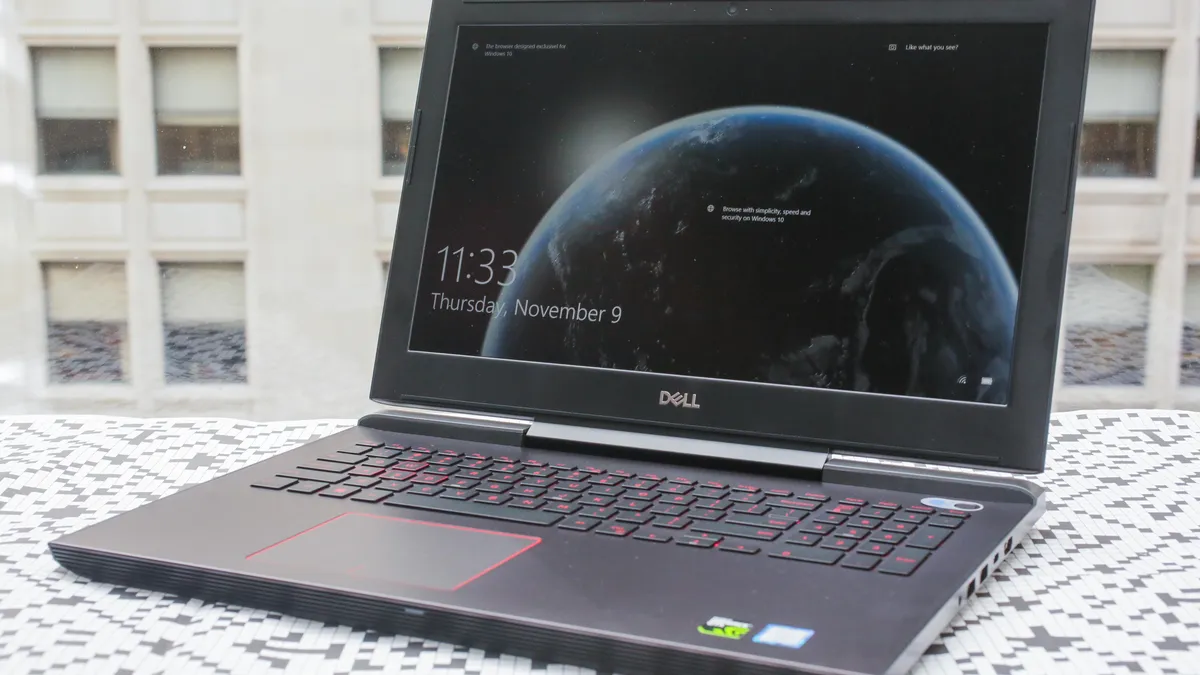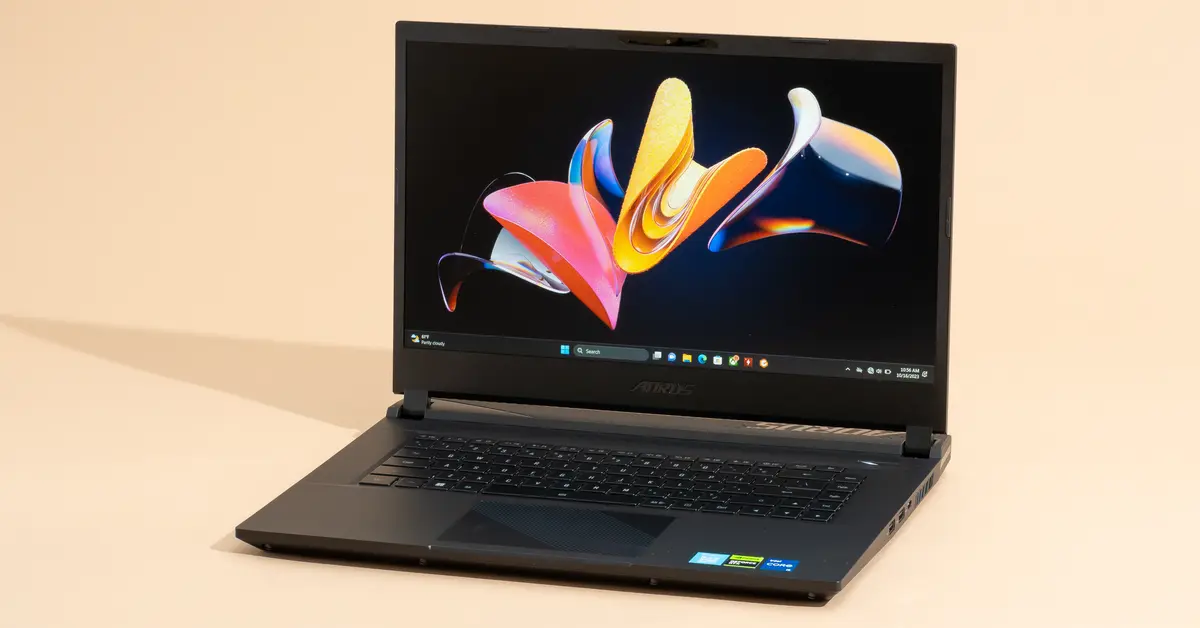Introduction
Welcome to our guide on how to update the Dell Inspiron 15 7000 Gaming laptop with a solid-state drive (SSD). If you’re looking to give your laptop a performance boost and enjoy faster boot times and improved overall responsiveness, upgrading to an SSD is a great choice.
The Dell Inspiron 15 7000 Gaming laptop is a popular choice among gamers and content creators due to its powerful performance and high-quality display. However, one area where it may fall short is storage. The stock hard drive that comes with the laptop can be slower and may not offer enough space for all your files and games.
By replacing the traditional hard drive with an SSD, you can significantly improve the speed and performance of your Dell Inspiron 15 7000 Gaming laptop. SSDs are known for their faster read and write speeds, which make for a much snappier experience when launching applications, opening files, and booting up your system.
In this guide, we will take you through the step-by-step process of upgrading your Dell Inspiron 15 7000 Gaming laptop to an SSD. We will cover everything from choosing the right SSD for your needs to backing up your data, and finally installing the new drive and updating the BIOS.
Please note that performing this upgrade will require opening your laptop’s case and handling delicate components. If you are uncomfortable with this process or have limited technical experience, we recommend seeking assistance from a professional or contacting Dell’s technical support.
Before we dive into the upgrade process, it’s essential to note that any modifications made to your laptop may void the warranty. Be sure to check your warranty status with Dell before proceeding, and make an informed decision.
Now that we’ve covered the basics, let’s get started on upgrading your Dell Inspiron 15 7000 Gaming laptop to an SSD, and unlock its full potential.
Preparing for the Upgrade
Before you begin the process of upgrading your Dell Inspiron 15 7000 Gaming laptop to an SSD, there are a few essential preparations you need to make. Following these steps will help ensure a smooth upgrade process and protect your data.
1. Backup Your Data: The first and most crucial step is to back up all your important files and data. This includes documents, photos, videos, and any other files you don’t want to lose during the upgrade process. You can use an external hard drive, cloud storage services, or even a USB flash drive to create a backup of your data. Taking this precautionary measure will give you peace of mind and prevent any potential data loss.
2. Create a Recovery Drive: It’s recommended to create a recovery drive before beginning the upgrade. This will allow you to restore your system to its factory state if anything goes wrong during the process. To create a recovery drive, you can use the built-in recovery tool provided by Windows. Simply search for “Create a recovery drive” in the Start menu, follow the on-screen instructions, and choose a USB drive with sufficient storage capacity.
3. Gather the Necessary Tools: To successfully upgrade your Dell Inspiron 15 7000 Gaming laptop to an SSD, you’ll need a few tools on hand. These typically include a screwdriver set with various sizes, an anti-static wristband, and perhaps some cable ties or adhesive strips to keep things organized when reassembling the laptop. Ensure you have these tools readily available to avoid any interruptions during the upgrade process.
4. Disable BitLocker: If you have BitLocker encryption enabled on your current hard drive, it’s crucial to disable it before starting the upgrade. BitLocker can prevent the laptop from booting up with the new SSD installed, causing unnecessary complications during the upgrade process. To disable BitLocker, go to the Control Panel, select “System and Security,” then “BitLocker Drive Encryption,” and choose to suspend or decrypt the drive.
5. Take Note of BIOS Settings: Before opening your laptop and removing the old hard drive, make sure to jot down any unique BIOS settings you may have configured. This includes options like boot order, secure boot settings, and any other customizations you want to retain after the upgrade. Having these settings handy will make it easier to reconfigure your BIOS once the new SSD is installed.
By following these preparation steps, you’ll be ready to proceed with confidence as you upgrade your Dell Inspiron 15 7000 Gaming laptop to an SSD. With your data safely backed up, tools in hand, and the necessary precautions taken, you’re well on your way to a faster and more efficient computing experience.
Choosing the Right SSD
When it comes to choosing the right SSD for your Dell Inspiron 15 7000 Gaming laptop upgrade, several factors should be considered. The performance and compatibility of the SSD will play a vital role in determining how effectively it enhances your laptop’s speed and overall performance.
1. Storage Capacity: The first consideration is the storage capacity you require. SSDs come in various sizes, ranging from 120GB to 2TB or more. Think about how much storage space you currently need and how much you may require in the future. It’s important to strike a balance between sufficient storage capacity and staying within your budget.
2. Form Factor: The form factor of the SSD must match the specifications of your Dell Inspiron 15 7000 Gaming laptop. Most laptops support the 2.5-inch SATA form factor, which is the standard for many SSDs. However, some laptops, including newer models, may require an M.2 NVMe SSD. Check your laptop’s user manual or specifications to determine the supported form factors.
3. Speed and Performance: SSDs define the speed and performance of your system. Look for SSDs with fast read and write speeds, as higher speeds will result in faster boot times, file transfers, and application launches. Consider SSDs with features like NVMe or PCIe Gen3 interface for optimum performance. However, keep in mind that these features may come at a higher cost.
4. Brand and Reliability: Opting for a reliable and reputable brand is important to ensure the longevity and performance of the SSD. Go for well-known brands that have a track record of producing high-quality and reliable SSDs. Reading customer reviews and seeking recommendations from trusted sources can also help you make an informed decision.
5. Budget: Lastly, consider your budget when choosing an SSD for your Dell Inspiron 15 7000 Gaming laptop. SSDs vary in price based on capacity, speed, and brand. Determine your budget range and find the best SSD that fits within your financial limitations while still meeting your performance needs.
Taking all these factors into account will help you choose the right SSD that best suits your needs and budget. It’s worth noting that upgrading to any SSD will provide significant improvements over a traditional hard drive, but selecting the optimal SSD for your Dell Inspiron 15 7000 Gaming laptop will ensure you get the most out of your upgrade.
Backing Up Your Data
Before proceeding with the SSD upgrade for your Dell Inspiron 15 7000 Gaming laptop, it’s crucial to back up all your important data. This step is essential to prevent any potential loss or corruption of files during the upgrade process. Here’s how you can back up your data:
1. Identify Important Files: Take some time to identify the files and data that you want to back up. This may include documents, photos, videos, music, bookmarks, and any other files that are important to you. Make a list of these files or create a separate folder to easily locate and copy them later.
2. Use External Storage: The most common method of backing up your data is by using external storage devices. This includes external hard drives, USB flash drives, or even cloud storage services. Connect your external storage device to your laptop and ensure it has enough free space to accommodate all your files.
3. Copy Files Manually: Once you have connected the external storage device, you can manually copy and paste your important files from your laptop to the external storage device. Navigate to the location of each file or folder you want to back up, right-click, select “Copy,” then navigate to the external storage device and right-click again to select “Paste.”
4. Use Backup Software: Alternatively, you can use backup software to automate the process of backing up your data. There are various software options available, both free and paid, that can help you create a complete backup of your files. These programs allow you to schedule regular backups and ensure that all your important data is securely stored.
5. Cloud Storage Services: Another convenient option is to utilize cloud storage services such as Google Drive, Dropbox, or Microsoft OneDrive. These services allow you to upload your files to secure remote servers and access them from any device with an internet connection. Simply upload your files to the respective cloud storage service and ensure the synchronization is complete.
6. Verify Backup: After the backup process is complete, take the time to verify that your files have been successfully copied to the external storage device or cloud storage service. Open a few files from different folders to ensure they are accessible and intact. This will give you peace of mind knowing that you have successfully backed up your important data.
By following these steps, you can ensure that your crucial files and data are safely backed up before proceeding with the SSD upgrade for your Dell Inspiron 15 7000 Gaming laptop. By taking this precautionary measure, you can proceed with the upgrade process knowing that your data is secure and protected.
Gathering the Required Tools
Before you begin upgrading your Dell Inspiron 15 7000 Gaming laptop with an SSD, it’s important to ensure that you have all the necessary tools on hand. Having the right tools will make the upgrade process smoother and help you avoid any unnecessary issues or delays. Here are the essential tools you’ll need:
1. Screwdriver Set: A set of screwdrivers with different sizes and types is a must-have for opening up your laptop’s case. Most laptops use small Phillips or Torx screws, so having the appropriate screwdriver heads will allow you to remove and reinstall the screws with ease.
2. Anti-Static Wristband: An anti-static wristband is essential to prevent static electricity from damaging sensitive components of your laptop. This wristband grounds you, preventing any static charges from building up and potentially harming your laptop’s internal hardware.
3. Cable Ties or Adhesive Strips: To keep your cables organized and prevent them from getting tangled during the upgrade, cable ties or adhesive strips can be handy. These tools will help you neatly secure and manage the cables inside your laptop as you work.
4. Cleaning Cloth and Isopropyl Alcohol: It’s a good idea to have a microfiber cleaning cloth and isopropyl alcohol on hand to clean any dust or smudges from your laptop’s components. This will ensure a clean and pristine work environment and help maintain the longevity of your hardware.
5. Plastic Opening Tools: Plastic opening tools, such as spudgers or nylon pry bars, can be useful for gently prying open the laptop’s plastic case without causing any damage. These tools provide leverage to safely separate the case and access the internal components.
6. Thermal Paste: Depending on the specific upgrade you plan to perform, you may need thermal paste. If you’re replacing the CPU or GPU heatsink, it’s advisable to clean off the old thermal paste and apply a fresh layer to ensure optimal heat transfer and cooling efficiency.
7. Spare Screws and Parts Containers: It’s always a good idea to have spare screws and parts containers at hand. During the upgrade process, you may need to remove and reinstall some screws or keep track of small parts, so having extra screws and dedicated containers will help keep everything organized.
By gathering these necessary tools before starting the upgrade, you’ll be well-prepared to handle any situation that may arise. Having the right tools not only makes the process smoother but also ensures that you can perform the upgrade confidently, without the risk of damaging your Dell Inspiron 15 7000 Gaming laptop.
Opening the Laptop Case
Before you can replace the hard drive with the new SSD in your Dell Inspiron 15 7000 Gaming laptop, you’ll need to open the laptop’s case. Opening the case gives you access to the internal components of the laptop. Here’s how you can safely open the laptop case:
1. Power Off and Disconnect: Make sure that your laptop is powered off and unplugged from the power source. This ensures that you are not at risk of electric shock and prevents any damage to the components while working on the laptop.
2. Prepare a Clean Workspace: Find a clean, well-lit area to work on your laptop. Clear a space where you can lay the laptop down and have enough room to comfortably work with the screwdrivers and other tools you’ll need. It’s also a good idea to have a soft surface, such as a microfiber cloth or piece of foam, to protect the laptop’s exterior.
3. Remove the Battery (if applicable): Some Dell Inspiron 15 7000 Gaming laptop models have removable batteries, while others have integrated batteries that cannot be easily removed. If your laptop has a removable battery, make sure to remove it first. Most laptops have a latch or release button that allows you to slide out the battery.
4. Locate and Remove the Screws: Carefully inspect the bottom of your laptop and look for the screws that secure the bottom case. These screws are usually located on the outer edges and may be hidden under rubber feet or small plastic covers. Use a screwdriver that fits the screw heads properly and unscrew them in the correct order. Be sure to keep track of the screws and their respective locations as they may be of different sizes or types.
5. Separate the Bottom Case: Once all the screws are removed, gently pry open the bottom case using a plastic opening tool or nylon pry bar. Start near the back of the laptop and work your way around, applying gentle pressure to separate the case clips. Take your time and be careful not to force or twist the case to avoid breaking any clips or damaging the laptop’s internal components.
6. Ground Yourself: To prevent electrostatic discharge, wear an anti-static wristband and make sure to touch a grounded metal surface, such as a table leg, before handling any internal components. This helps dissipate any static charges you may have built up.
7. Take Photos or Notes (optional): It can be helpful to take photos or make notes of the internal layout before proceeding further. This will help you remember the cable connections and component placement when reassembling the laptop. Alternatively, you can refer to the Dell service manual for your specific laptop model for guidance.
By following these steps, you’ll be able to safely open the case of your Dell Inspiron 15 7000 Gaming laptop and gain access to the internal components. Remember to work slowly and carefully, keeping track of the screws and any removable parts. This will ensure that you can proceed to the next step of the upgrade process smoothly and without any issues.
Removing the Old Hard Drive
Once you have successfully opened the case of your Dell Inspiron 15 7000 Gaming laptop, the next step in the SSD upgrade process is to remove the old hard drive. Removing the old hard drive involves disconnecting cables and screws that secure it in place. Here’s how you can safely remove the old hard drive:
1. Identify the Old Hard Drive: Locate the old hard drive inside your laptop. It is typically a rectangular-shaped device connected to the motherboard with a data cable and a power cable. Take note of how it is positioned and how it is connected to ensure proper reinstallation of the new SSD.
2. Disconnect the Cables: Carefully disconnect the data cable and power cable that are connected to the old hard drive. The data cable is usually a flat ribbon cable, while the power cable is a small, wider cable with a plastic connector. Gently pull the connectors by grasping them at the ends, and avoid pulling on the cables themselves to reduce the risk of damage.
3. Remove the Screws: Look for the screws that secure the old hard drive to the laptop’s mounting brackets or caddy. Use a screwdriver to remove these screws, making sure to keep track of them for reassembly. The number of screws and their positions may vary depending on your laptop model, so consult the service manual or follow visual cues to ensure all screws are removed.
4. Slide Out or Lift the Old Hard Drive: Once all the screws have been removed, carefully slide out or lift the old hard drive from its mounting bracket or caddy. Be cautious not to damage the connectors or any nearby components while removing the drive. It may require some gentle wiggling or slight upward pressure to free the drive from its position.
5. Store the Old Hard Drive: If the old hard drive is still functional and you want to keep it as a backup or for future use, handle it with care and store it in an anti-static bag or an appropriate storage container. This will protect it from static electricity and physical damage.
By following these steps, you can safely remove the old hard drive from your Dell Inspiron 15 7000 Gaming laptop. Remember to disconnect the cables and remove the screws with caution. Take your time and ensure that all components are properly disconnected before removing the old hard drive. Once the old hard drive is successfully removed, you’re ready to proceed with the installation of the new SSD.
Installing the New SSD
With the old hard drive removed from your Dell Inspiron 15 7000 Gaming laptop, it’s time to install the new SSD. Installing the new SSD involves connecting cables and securing it in place with screws. Here’s how you can safely install the new SSD:
1. Position the New SSD: Take the new SSD and position it in the same location where the old hard drive was previously installed. Ensure that it is aligned correctly and fits securely in the mounting bracket or caddy.
2. Connect the Cables: Attach the data cable to the appropriate port on the new SSD. This is usually a SATA connector, which matches the shape and size of the cable connector. Make sure to align the connectors properly and gently push them together until they fit snugly.
3. Connect the Power Cable: Connect the power cable to the power port on the new SSD. This cable provides the necessary power supply for the SSD to function correctly. Again, ensure that the connectors are aligned correctly and fully inserted.
4. Secure the SSD with Screws: Use the screws that came with the laptop or the ones you removed from the old hard drive to secure the new SSD in place. Align the screw holes on the SSD with the corresponding holes on the mounting bracket or caddy, and gently tighten the screws using a screwdriver. Be careful not to overtighten the screws, as this may damage the SSD or the laptop’s components.
5. Check Cable Connections: Double-check the data and power cable connections to ensure they are securely fastened. Verify that the cables are properly aligned and fully inserted on both ends to avoid any connectivity issues or data transfer problems.
6. Replace the Laptop’s Bottom Case: Carefully place the laptop’s bottom case back in position and align it with the screw holes. Press down firmly to secure the case and ensure that any clips or latches are engaged. Then, reinsert and tighten all the screws that secure the case without overtightening.
7. Power On and Verify: Plug in your laptop and power it on to ensure that the new SSD is detected and functioning correctly. Check the BIOS or the operating system’s disk management utility to confirm that the new SSD is recognized and properly identified with the intended storage capacity.
By following these steps, you can successfully install the new SSD in your Dell Inspiron 15 7000 Gaming laptop. Remember to handle the SSD and connectors with care, ensuring proper alignment and secure connections. Once the SSD is installed, your laptop will be ready to reap the performance benefits of faster read and write speeds, resulting in improved overall performance.
Closing the Laptop Case
Once you have successfully installed the new SSD in your Dell Inspiron 15 7000 Gaming laptop, it’s time to close the laptop case. Closing the case ensures that all internal components are properly protected and secured. Here’s how you can safely close the laptop case:
1. Check and Secure Cable Connections: Before closing the laptop case, double-check that all cable connections are securely attached to the new SSD. Confirm that the data cable and power cable are properly inserted and fastened. This step will help prevent any connectivity issues or potential data transfer problems.
2. Align and Place the Bottom Case: Align the bottom case of your laptop with the screw holes on the base. Carefully position the case and ensure that any clips or latches are properly engaged. Gently press down on the case to secure it in place, making sure it is flush with the rest of the laptop’s body.
3. Reinsert and Tighten the Screws: Begin reinserting and tightening the screws that were removed earlier from the bottom case. Use a screwdriver to tighten them, but be cautious not to overtighten. Start with the screws near the center of the case and work your way outward. This will help ensure even pressure distribution and prevent any uneven gaps or misalignment.
4. Verify the Closure: Once all the screws are securely tightened, visually inspect the laptop to ensure that the case is closed properly. Look for any noticeable gaps or misalignments. Gently press on the case to confirm that there are no loose or creaking sections. A properly closed laptop case should feel solid and secure.
5. Power On and Test: Now that the laptop case is closed, plug in your laptop and power it on to verify that everything is functioning correctly. Check that the laptop boots up normally and that the new SSD is recognized by the operating system. Run some basic tasks to ensure that the laptop is performing optimally.
6. Final Visual Check: Perform a final visual check of the laptop to ensure that all external features, such as ports, buttons, and indicators, are undamaged and functioning correctly. If everything appears to be in order, you can proceed with using your upgraded Dell Inspiron 15 7000 Gaming laptop.
Following these steps will help you successfully close the laptop case of your Dell Inspiron 15 7000 Gaming laptop after installing the new SSD. Always exercise caution when handling delicate components and make sure that all connections are secure before closing the case. Once the case is closed, you can enjoy the improved performance and faster speeds of your upgraded laptop.
Updating the BIOS
After installing a new SSD in your Dell Inspiron 15 7000 Gaming laptop, it’s important to update the BIOS. The BIOS (Basic Input/Output System) is a firmware that resides on the motherboard and controls the basic functions of your computer, including hardware initialization and system startup. Updating the BIOS ensures that your laptop is compatible with the new hardware and can take full advantage of its features. Here’s how you can update the BIOS:
1. Identify the Current BIOS Version: Before proceeding with the update, it’s essential to know the current version of your BIOS. You can typically find this information by restarting your laptop and entering the BIOS setup utility. Look for a section that displays the BIOS version, usually located in the main or system information tab.
2. Visit the Dell Support Website: Go to the Dell support website and navigate to the page for your specific laptop model. Search for the latest BIOS update available for your laptop. Download the BIOS update file and save it to a location on your laptop’s hard drive.
3. Check for Pre-Update Instructions: Before proceeding with the BIOS update, it’s crucial to check if there are any specific instructions provided by Dell. Some updates may require you to perform certain actions, such as disabling certain settings or connecting your laptop to a power source. Follow these instructions carefully to ensure a successful update.
4. Run the BIOS Update Utility: Locate the downloaded BIOS update file and double-click on it to run the BIOS update utility. Follow the on-screen instructions to initiate the update process. It’s important not to interrupt the update or turn off your laptop during this process, as it can lead to serious system issues.
5. Wait for the Update to Complete: The BIOS update process may take several minutes to complete. During this time, your laptop may restart automatically or display a progress bar. It’s essential to be patient and not interfere with the update process. Once the update is completed successfully, your laptop will restart again.
6. Verify the Updated BIOS: After your laptop restarts, enter the BIOS setup utility again to confirm that the BIOS has been successfully updated. Check the version number displayed to ensure that it matches the latest version you downloaded. This serves as confirmation that the update was successful.
7. Reset BIOS Settings (if necessary): If the BIOS update has reset any previously customized settings, you may need to reconfigure them. Make note of any custom BIOS settings you had previously, such as boot order or power management options, and adjust them accordingly in the updated BIOS.
By following these steps, you can successfully update the BIOS on your Dell Inspiron 15 7000 Gaming laptop. Keeping the BIOS up to date ensures that your laptop is compatible with the new SSD and can operate at its optimal performance. Take the time to understand the process and follow the instructions closely to avoid any potential issues during the BIOS update.
Reinstalling the Operating System
Once you have successfully updated the BIOS on your Dell Inspiron 15 7000 Gaming laptop and installed the new SSD, the next step is to reinstall the operating system. Reinstalling the operating system on the new SSD ensures a fresh start and optimal performance. Here’s how you can do it:
1. Prepare the Installation Media: Obtain a bootable installation media for the operating system you want to install. This can be a USB flash drive or a DVD containing the operating system installation files. Ensure that it is compatible with your laptop and contains the necessary drivers for your specific hardware.
2. Backup Your Data (if necessary): If you haven’t already done so, consider backing up any important data that you want to keep from your previous installation. Since reinstalling the operating system will overwrite the SSD, it’s important to have a copy of your crucial files to prevent any loss or data corruption.
3. Connect the Installation Media: Insert the bootable installation media into your laptop’s USB port or DVD drive. Restart your laptop and enter the BIOS setup utility. Configure the boot order to prioritize the installation media, allowing your laptop to boot from it.
4. Begin the Installation Process: Follow the on-screen prompts to start the operating system installation process. This may involve selecting language preferences, entering product keys, and agreeing to license terms. Choose the installation type that suits your needs, such as a clean installation or an upgrade.
5. Create Partitions and Install the OS: During the installation process, you will need to partition the new SSD and select the partition where you want to install the operating system. Create a new partition or select the existing one, and proceed with the installation. Follow any additional prompts or instructions as required by the operating system installation wizard.
6. Complete the Installation: Once the operating system installation is complete, your laptop will restart. Follow any final on-screen prompts to set up your user account, customize the settings, and configure any additional options. Install the necessary drivers and applications to ensure optimal functionality and compatibility.
7. Restore Your Data: If you backed up your data before reinstalling the operating system, you can now restore your files and applications. Copy your backed-up data to the appropriate folders on the new SSD or use a data migration tool to quickly transfer your files from the backup to the new operating system installation.
By following these steps, you can successfully reinstall the operating system on your new SSD. Make sure to take your time and follow the on-screen prompts carefully. Once the installation is complete, you’ll have a fresh operating system on your Dell Inspiron 15 7000 Gaming laptop, ready to deliver optimal performance with the new SSD.
Restoring Your Data
After reinstalling the operating system on your Dell Inspiron 15 7000 Gaming laptop, it’s time to restore your data. Restoring your data means transferring your files and applications back onto your laptop from the backup you created before reinstalling the operating system. Here’s how you can successfully restore your data:
1. Locate Your Backup: Locate the backup you created before reinstalling the operating system. This could be an external hard drive, USB flash drive, cloud storage, or any other storage medium where you stored your files and applications.
2. Connect the Backup Storage: Connect the storage medium containing your backup to your laptop. This could be through a USB port, external hard drive enclosure, or by signing in to the cloud storage service you used for backup.
3. Copy Your Files: Navigate to the backup storage and locate your files and folders. Copy the files and folders you want to restore to your laptop’s new operating system. You can do this by selecting the files and using the copy and paste function or by dragging and dropping the files into the appropriate folders on your laptop.
4. Install Applications: If you have any applications or programs that were not included in the operating system installation, you will need to reinstall them. Locate the installation files or setup executables for your applications and run them to initiate the installation process. Follow the on-screen prompts and instructions to complete the installation of each application.
5. Verify File Integrity: Once your files have been copied and applications reinstalled, take the time to verify the integrity of your restored data. Open a few files and ensure that they open properly without any errors or corruption. This step ensures that your files were successfully restored from the backup and are ready for use.
6. Organize and Clean Up: If needed, organize your files into appropriate folders and directories to maintain a clean and organized file structure. Delete any unnecessary or redundant files to free up storage space on your laptop’s new SSD.
7. Update and Sync: Check for any updates for your applications and install them to ensure you have the latest versions. If you were using cloud storage or syncing services, make sure to sync your files to ensure they are up to date and accessible across devices.
By following these steps, you can successfully restore your data after reinstalling the operating system on your Dell Inspiron 15 7000 Gaming laptop. Take your time to ensure that all files and applications are restored correctly, and verify the integrity of your data. Once your data is restored, you can continue using your laptop with all the files and applications that were backed up, providing a seamless transition to your new operating system.
Final Thoughts
Congratulations! You have successfully upgraded your Dell Inspiron 15 7000 Gaming laptop to an SSD and reinstalled the operating system. By following the step-by-step process outlined in this guide, you have unlocked the full potential of your laptop and have taken significant steps towards improving its performance and responsiveness.
With the new SSD installed, you can expect faster boot times, quicker application launches, and improved overall system performance. The SSD’s ability to read and write data at high speeds will make tasks smoother and more efficient, enhancing your gaming experiences, content creation projects, and everyday computing tasks.
Remember to regularly back up your data to ensure you have a copy of your important files and to protect against any future data loss. This is particularly important when making hardware changes or performing system updates.
Additionally, keep in mind that upgrading your laptop may void its warranty. If you encounter any difficulties during the installation process or experience issues after the upgrade, it’s recommended to seek assistance from a professional or contact Dell’s technical support for guidance.
As you continue using your upgraded laptop, consider taking further steps to optimize its performance. This can include periodically cleaning out unnecessary files, managing startup applications, and keeping your operating system and drivers up to date.
We hope this guide has been helpful in guiding you through the process of upgrading your Dell Inspiron 15 7000 Gaming laptop to an SSD and reinstalling the operating system. Enjoy the enhanced performance and responsiveness of your laptop, and may it serve you well in all your future endeavors!







